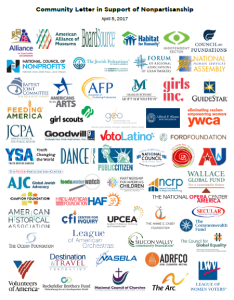Facebook can be “the greatest time sink in human history,” said Sree Sreenivasan, multimedia professor and dean of student affairs at Columbia University Graduate School of Journalism. But the most popular online social network on the planet also can be an invitation into a prospect’s life to which nonprofits didn’t previously have access.
Sreenivasan led a session on how Web tools are transforming prospect research during the recent Fundraising Day New York, sponsored by the Greater New York Chapter of the Association of Fundraising Professionals.
Sreenivasan suggests “friending” people on Facebook whom you would invite to a garden party, such as friends and business clients. The mistake that’s often made, however, is that people give everyone access to the entire house, and not just the garden. “You’d like everyone at your party to use the Port-o-potty” outside, not have hundreds of people traipsing through your bathroom. Friending everyone you know on Facebook is like giving everyone full access to your bathroom, all the way to your medicine cabinet.
The key to Facebook is redefining your profile, creating lists and setting a certain level of access to your profile. “Re-establish in cyberspace the relationship in real life,” Sreenivasan said, suggesting that users constantly refine their Facebook profile.
The value of Facebook increases when you sort people by specific lists, he said, as privacy settings give you specific controls for specific lists, such as “best donors” or “prospects.” Those people are choosing to publish their information, so use it. Sreenivasan said you don’t have to feel guilty because you’re getting an invitation into these lives that you didn’t before, but think strategically how you can use it.
Sreenivasan reminded that what users do online says something about them. “Whatever you do on there reflects on you,” he said.
One drawback to Facebook is its email system, which does not have features that email has always had, such as carbon copy on messages or creating folders for organizing messages. “I hate Facebook email, I wouldn’t do it with a prospect,” Sreenivasan said.
Facebook also can overdo it when it comes to blending work and personal lives, Sreenivasan said. It becomes important to consider what to do when prospects “friend” you on the social networking site.
Online social networks like LinkedIn, Facebook and Twitter offer nonprofits a “new level of engagement” with prospects, Sreenivasan said. “The Internet is about credibility,” he said, so prospects appreciate being able to use their knowledge and expertise in their respective fields to help nonprofits.
There’s also an appreciation on the Web of being a connector, connecting others and being generous with your time and energy, when it’s not about money or getting paid, Sreenivasan said.
Sreenivasan emphasized the need to spend time on LinkedIn and ensure that your profile is complete. LinkedIn provides a summary, indicating what percentage of your profile is completed, such as a photo, job description, and such. “The main thing is to spend time on it. When you’re on deadline, it’s too late,” he said.
“That’s why you have to curate your profile,” Sreenivasan said, adding that LinkedIn now appears in Google search results. It’s been said that optimum utility of LinkedIn begins when you reach 60 people in your network, according to Sreenivasan.
Describing Twitter as “the most open of the social networks,” Sreenivasan implored nonprofits to “look through your top prospects and see what kinds of people are open, out there and sharing ideas.”
Twitter can be “for listening, getting ideas and seeing what’s out there,” Sreenivasan said. “If you think you’re not interesting, see what’s out there. It’s a flow of information that’s never been seen before,” he said.
Sreenivasan suggested using Twitter to listen to trends, get new ideas, and see new articles. How frequently should you Twitter? No more than one in three of your Tweets should be about your organization, he said, adding that others should add to the conversation. Occasional marketing messages are OK, however, a Tweet should be interesting, useful and provocative. “If you become a hub of information, people will follow,” said Sreenivasan. “If you become a good source about articles in your field, you’ll find donors will follow you,” he said.
Twitter is different from email messages in that it takes very little effort to follow people and recipients don’t feel guilty not replying to messages.
Sreenivasan noted that a recent article by the Center for Public Integrity, where he is a board member, had its highest source of traffic come from Twitter. Once readers get to your organization’s page, they’ll see the all-important “Donate now” button.
With a 140-character limit on Twitter, it’s helps to aim for 120-character messages, leaving some room for followers to re-tweet or add a message of their own.
Having an open mind is great when it comes online social networks, Sreenivasan said, but be careful, and “don’t let your brains fall out.” NPT












